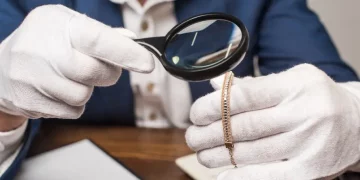The world of high-profile auctions is often seen as a glamorous, fast-paced arena where millions of dollars are exchanged for rare artifacts, fine art, vintage collectibles, and luxury items. The bidding wars, the tension-filled moments, and the anticipation of securing a rare item can be exhilarating, but occasionally, things take a shocking turn. Imagine a high-stakes auction, where bidders are at the height of their excitement, only to be abruptly interrupted by the police arriving mid-bidding. This is exactly what happened during one unforgettable auction, where law enforcement descended upon the event, halting the sale of several rare and valuable items.
In this article, we will explore the details of this dramatic interruption, diving deep into the events that led to the police raid, the implications it had on the auction, and the broader legal gray areas in the world of collectibles trading that allowed such a situation to arise. By examining this case, we will also discuss the various legal and ethical considerations surrounding the buying and selling of rare items, including issues of provenance, authenticity, and the shadowy world of illicit trade in high-value collectibles.
The High-Profile Auction That Caught the Attention of Authorities
The scene was set at one of the world’s most prestigious auction houses. The auction was meant to be a showcase of rare and highly sought-after items: a collection of ancient artifacts, rare paintings, and historical memorabilia that could fetch millions of dollars. With high-profile bidders flying in from around the world, the atmosphere was electric. The hammer was poised to fall on some of the most valuable pieces in the collection. But just as the auction was reaching its climax, the unthinkable happened: police officers stormed the venue, bringing the entire event to a halt.
This wasn’t just any ordinary auction. This was a rare instance in which an auction house’s carefully curated event was derailed by law enforcement mid-sale. The raid, which caught many by surprise, was prompted by concerns regarding the authenticity and provenance of certain items being auctioned. The police acted on an anonymous tip-off and launched an investigation into the collection’s origin, suspecting that some of the items may have been stolen, looted, or otherwise trafficked through illicit channels. The items that were most heavily scrutinized included rare artifacts with questionable documentation, as well as artworks with missing provenance.
As the auction house scrambled to handle the chaos, bidders who had placed substantial amounts of money on the table found themselves left in the lurch, and the event was abruptly ended. The disruption not only affected the immediate sales but also raised larger questions about the risks inherent in the world of high-value collectibles and the fragile nature of provenance in art and artifact trading.
The Legal Gray Areas in Collectibles Trading
The world of collectibles, particularly rare art, historical artifacts, and luxury items, operates in a complex legal landscape. While legitimate collectors and auction houses take extensive measures to verify the authenticity and provenance of items, the reality is that the market is not immune to fraud, illicit trade, and legal loopholes that can be exploited. In this section, we will explore some of the legal gray areas in collectibles trading that contributed to the events leading up to the police raid.
1. The Shadow of Illicit Provenance
Provenance, or the history of ownership of a piece, is one of the most crucial aspects of collectibles trading. For high-value items such as rare art, artifacts, or antique jewelry, an item’s provenance establishes its authenticity and legal ownership. However, there are many cases where the provenance of items is either unclear, falsified, or incomplete. In the case of the auction that was raided, several of the items had vague or suspicious histories. Some had gaps in their documented ownership, making it difficult to trace their origin.
A lack of provenance or the presence of dubious documentation often raises red flags for authorities, particularly when it comes to items that could have been stolen or illegally obtained. For example, ancient artifacts that are looted from archaeological sites may be trafficked through illegal channels before being sold at high-end auctions. In some cases, auction houses may unknowingly accept items with falsified provenance, only to find out later that they are linked to illicit trade.
While most auction houses perform due diligence to verify provenance, the process is not always foolproof. The legal gray areas arise when collectors or dealers use forged documentation, or when items pass through multiple hands before reaching the auction floor, making it difficult for authorities to track their origin. This is exactly what occurred in the auction that was raided, where the authenticity of several high-profile pieces was questioned midway through the sale.
2. The Lack of Regulation in the Global Collectibles Market
Unlike the stock market or real estate transactions, the global collectibles market is not subject to universal regulation. This lack of oversight makes it easier for unscrupulous dealers to engage in illegal activities without being caught. While certain countries have enacted laws to combat the illegal trafficking of cultural property—such as the 1970 UNESCO Convention, which seeks to prevent the illicit import, export, and transfer of ownership of cultural property—the enforcement of these laws is often inconsistent.
Many items sold at international auctions pass through multiple jurisdictions, making it difficult for authorities to enforce national laws. The international nature of the auction industry means that a rare item sold in one country may have originated in another, and any discrepancies in its provenance may go unnoticed until it surfaces in a high-profile sale. Auction houses, particularly those that deal in high-value items, often face challenges in ensuring that the items they sell comply with international regulations.
In the case of the police raid, the auction house was caught in the crossfire of international law, as some of the items under suspicion had been imported from countries with weak enforcement of cultural property laws. The raid highlighted the vulnerabilities in the international trade of rare items and the potential consequences of buying and selling collectibles without fully understanding their legal standing.
3. The Impact of Forged Documentation and Fake Artworks
Forgery is one of the most rampant forms of fraud in the world of high-end collectibles. Fake artwork, artifacts, and historical documents are regularly passed off as authentic, and forgeries are becoming increasingly sophisticated. Some forgeries are so convincing that even experts struggle to distinguish them from genuine pieces. The sale of forged items can cause major financial losses for collectors and investors, but it can also lead to legal repercussions for auction houses if they unknowingly sell counterfeit goods.
In the auction that was raided, investigators suspected that some of the items were fakes or had been altered in some way to make them appear more valuable than they truly were. Whether these forgeries were deliberate attempts to deceive buyers or the result of a failure to properly authenticate the items is still unclear. However, the consequences of selling such items are significant. Auction houses that are found to have sold forged items can face lawsuits, damaged reputations, and regulatory scrutiny.
The existence of forged items in the market also creates a risk for legitimate collectors who are seeking to invest in rare, valuable pieces. Without proper vetting, it’s easy for well-meaning buyers to fall victim to fraudulent transactions. The auction house’s role in ensuring the authenticity of items sold is paramount, and the failure to uphold these standards can have catastrophic consequences for all parties involved.

4. The Role of Auction Houses in Enabling or Preventing Fraud
Auction houses hold a unique position in the collectibles market. They act as intermediaries between sellers and buyers, and as such, they have a responsibility to ensure that the items they auction are legally and ethically sourced. While some auction houses have strong procedures in place to verify the provenance and authenticity of the items they sell, others may be more lax in their vetting processes. This discrepancy in practices can lead to a lack of accountability and facilitate fraudulent sales.
In the case of the auction that was raided, the house in question had been criticized for its lack of due diligence in verifying the provenance of certain items. The police raid, which targeted items with unclear ownership histories, underscored the importance of robust protocols for preventing fraud. The auction house’s failure to adequately check the authenticity of the items contributed to the chaos that unfolded during the sale.
While auction houses are not always directly responsible for illegal activity, their role in verifying and authenticating items can have a significant impact on the legitimacy of the collectibles market. By implementing stricter controls and more rigorous vetting procedures, auction houses can help minimize the risk of fraud and ensure that only legitimate, ethically sourced items are put up for sale.
The Aftermath: How the Raid Changed the Auction World
The raid sent shockwaves through the collectibles industry, prompting many to question the integrity of auction practices and the broader market for rare items. The fallout was felt by the auction house involved, as they faced legal action, reputational damage, and increased scrutiny from regulators. Bidders who had been caught up in the sale were left with uncertainty about the authenticity of the items they had placed bids on, and many began to re-evaluate the risks involved in high-profile auctions.
In the wake of the raid, the auction house pledged to reform its procedures, implementing more stringent protocols for verifying the provenance of items and ensuring that all sales were fully compliant with international laws. The event also sparked a wider conversation about the need for greater regulation in the global collectibles market. While many collectors and dealers still rely on the reputation of auction houses, there is now a greater awareness of the potential risks involved in purchasing rare items, particularly when their provenance is in question.
Conclusion: A Cautionary Tale for Collectors and Auction Houses Alike
The auction that was raided by police in the midst of its sale serves as a stark reminder of the complex and often murky world of collectibles trading. While most auctions are legitimate and offer a safe environment for buyers and sellers, there are always risks involved, particularly when it comes to the authenticity and provenance of rare items. The legal gray areas in the world of high-value collectibles are vast, and as this incident demonstrated, the consequences of trading in illicit or questionable items can be far-reaching.
For collectors, the lesson is clear: always conduct thorough due diligence before making significant investments in rare items. The auction house’s responsibility to verify provenance and authenticity is crucial, but ultimately, it is up to buyers to be vigilant and cautious in the marketplace. For auction houses, the raid highlights the need for stringent controls, transparency, and accountability when dealing with high-value items.
As the world of rare collectibles continues to grow and evolve, this dramatic incident will undoubtedly leave a lasting impression, reshaping the way collectors and auction houses approach the buying and selling of valuable and historically significant items.

















































